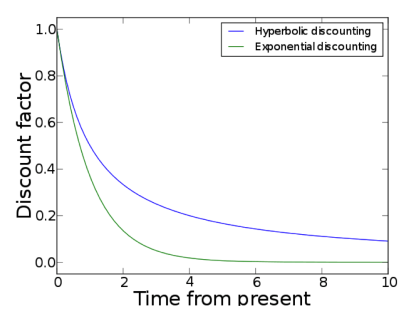The report of the public debate on the “Montagne d’Or project” – an open-pit gold mine which would be located in French Guiana – was published on 7 September 2018. Detailed information on the progress and assessment of the project and numerous documents, including documents reflecting the positions of opponents to the project, can be found on the website of the French Commission nationale du débat public (National Commission for Public Debate) (1). In this post, I deal with in a specific concept, which has been highlighted in the context of a study on the notion of “responsible mining” (2): the concept of “credibility.” After mentioning its occurrences and the way it has been defined in the process of the debate about the Montagne d’Or project, I establish a link with a famous observation by Adam Smith from his Theory of Moral Sentiments. Let us begin with the occurrences of the word “credibility” that appeared in the documents we reviewed (3). The first one connects “feasibility” and “credibility:” “Several technical questions strongly question the feasibility of the project,” the President of the CNDP writes (4). These questions raise two criticisms, about which she points out that “the lack of answers that would be considered realistic calls into question the credibility of the project.” The second occurrence is based on a “Cahier d’acteur” (participant’s text for the debate) reporting on the position of France Nature Environnement (FNE). In its introduction, it provides some justifications of FNE’s position on what it considers to be the lack of credibility of the case:
“The text submitted by the [company Montagne d’Or] tells a beautiful story, such a superficial and general description of risk management that the dossier lacks credibility. Some risks are minimized, others forgotten; in some cases, a certain inaccuracy suggests a superficial knowledge of the issues. And insufficient data hinder a realistic assessment of the project. Furthermore, as to the additional information “Risk Management and Prevention” requested by the CNDP, it has to be recognized that the document provided is not up to the human, societal, environmental and economic challenges posed by the mining project.” (5)
These justifications for the “lack of credibility” of the project refer in part to the third occurrence of the word “credibility.” It falls within the context of the definition of a “responsible mine” (6), in the section related to the “social licence to operate.” The word applies not only to the project, but also to the mining company that carries it:
“[The social licence to operate] does not refer to an official agreement or document issued by a government or a local authority, but to the credibility, reliability and actual or current acceptance of mining companies and of their projects. It is assigned by stakeholders on the basis of the credibility of mining companies and the type of relationships they establish with communities.”
Later in the text, credibility is linked to the character traits and virtuous conduct of the company responsible for the project:
“The credibility of mining companies is based on mutual respect, honesty, open dialogue, transparency, prompt responses to community concerns, disclosure of information, and consistency and predictability in the ethical behaviour of companies.”
Another occurrence associates credibility and legitimacy:
“In practice, lack of legitimacy leads to the rejection of a project, the presence of legitimacy and credibility leads to the acceptance of a project, while a high level of credibility combined with trust forms the basis for project approval.”
Finally, the document specifies the three concepts present in the previous sentence: legitimacy, credibility and trust – concepts on which the social acceptability of a mining project is based (7). Here is its whole definition of credibility:
“Credibility: The ability to be credible is largely created by regularly providing accurate and clear information and by fulfilling all community commitments. Credibility is often better established and maintained through the application of formal agreements where the rules, roles and responsibilities of society and the community are negotiated, defined and consolidated. Such a framework makes it possible to answer expectations and to reduce the risk of losing credibility by being perceived as breaking one’s promises – a common situation when relationships are not properly defined. It is preferable to avoid making verbal commitments, since, in the absence of a permanent recording, they are always open to subsequent reinterpretation.”
This precise and extensive definition goes beyond the general definition of credibility as “character, quality that makes something believable or trustworthy” (8). But fundamentally, both definitions are based on the fact that people can be believed – a meaning which is in accordance with the etymological origin of the word. The one proposed by the document related to responsible mining (see note 2) refers to it at the beginning of its statement: “ability to be credible.” This is where Adam Smith can enter the scene. Let us consider this excerpt from the last section of his Theory of Moral Sentiments:
“The desire of being believed, the desire of persuading, of leading and directing other people, seems to be one of the strongest of all our natural desires.” (9)
Historian Harvey Mitchell links the above passage to credibility:
“Credibility in human relationships is therefore founded on keeping one’s word. Appearance cannot totally be eliminated, because ‘the desire of being believed, the desire of persuading, of leading and directing other people [is] one of the strongest of all of our natural desires’.” (10)
But it is important to quote what Adam Smith said just before the above statement. Smith reminds us of the difference between being believed by others and being worthy of belief, which he compares with being praised by others and being worthy of praise:
“[…] we cannot always be satisfied merely with being believed, unless we are at the same time conscious that we are really worthy of belief. As the desire of praise and that of praise-worthiness, though very much akin, are yet distinct and separate desires; so the desire of being believed and that of being worthy of belief, though very much akin too, are equally distinct and separate desires.”
This distinction clarifies the concept of credibility. The “ability to be credible” referred to above with respect to mining companies’ credibility, may imply two types of desires on the part of the person (or the company) in question: either the desire to be believed or the desire to be worthy of belief. To clarify this difference, it is useful to refer to Smith’s assertion in the second chapter of Part III of the Theory of Moral Sentiments, a chapter devoted to the love of praise and the dread of blame. This assertion contains a special clause that he did not recall in his discussion about the desire to be believed:
“[Man naturally] desires, not only praise, but praiseworthiness; or to be that thing which, though it should be praised by nobody, is, however, the natural and proper object of praise. He dreads, not only blame, but blameworthiness; or to be that thing which, though it should be blamed by nobody, is, however, the natural and proper object of blame.”
The two clauses: “though it should be praised by nobody” and “though it should be blamed by nobody,” are decisive here. Smith explains just after that being praiseworthy, for example, implies that we must “become the impartial spectators of our own character and conduct.” This spectator is located within us (he is the “man within the breast,” as Smith also calls him). And it is this spectator who gives us from within his moral approval – an approval that confirms that we are or not praiseworthy. Here is what genuine credibility could mean: to be believed because we are worthy to be believed, as we should be praised because we are worthy of praise, as we should be trusted because we are worthy of trust. Alain Anquetil (1) See in particular the page (in French) “Autres documents et études.” https://montagnedor.debatpublic.fr/le-projet/autres-documents-et-etudes (2) “Responsible mining includes a comprehensive set of activities in the minerals sector which respect the rights of all stakeholders, including local communities, are respectful of the environment, have no adverse effects on human health, are based on the best international experience, respect the rule of law, and contribute to the sustainable prosperity of the related country.” (“Le concept de ‘mine responsable’. Parangonnage des initiatives mondiales,” Collection La mine en France, volume 9, February 2017; my translation). See also “Emmanuel Macron engage la démarche ‘Mine responsable’,” 24 March 2015. (3) These are documents in French a) from the company Montagne d’Or, b) relating to the public debate (see note 1), c) from WWF (World Wide Fund for Nature), d) FNE (France Nature Environnement), e) CNCDH (Commission Nationale Consultative des Droits de l’Homme), f) CGEDD (Conseil général de l’environnement et du développement durable), g) and the dossier « Le concept de ‘mine responsable’. Parangonnage des initiatives mondiales” mentioned above. We also consulted some press articles, which often referred to one of the occurrences reproduced in this post (see note 4). The search concerned the French word “crédibilité.” (4) See “Débat public sur le projet Montagne d’Or en Guyane du 7 mars au 7 juillet 2018. Bilan de la Présidente.” (“Public debate on the Montagne d’Or project in French Guiana from 7 March to 7 July 2018. President’s report.” My translation.) (5) See footnote 3. My translation. (6) See footnote 2. My translation. (7) “The social acceptability of a mining project is based on: – its legitimacy as perceived by stakeholders; – its credibility; – the level of trust placed in it by stakeholders.” (My translation.) (8) Source: CNRTL. My translation. (9) A. Smith, The Theory of Moral Sentiments, 1759, D. D. Raphael and A. L. Macfie (ed.), The Glasgow edition of the works and correspondence of Adam Smith, 1984. (10) H. Mitchell, “The Mysterious Veil of Self-Delusion in Adam Smith’s Theory of Moral Sentiments,” Eighteenth-Century Studies, 20(4), 1987, pp. 405-421. The “appearance” to which Mitchell refers concern, for example, cheating in a business relationship by giving the other party the appearance of honesty.




